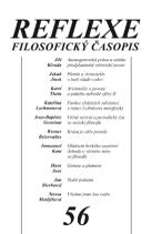Myth and Revelation in C. S. Lewis
The British literary historian C. S. Lewis held a particular view of mythopoetic language, which represents an interesting alternative to the theory of myth as human projection. Lewis suggests that mythopoetic language should not be understood as just an artistic device. He believes that methaphors can disclose new and unknown dimensions of reality. Human imaginaton, which is the source of new metaphors, is a perceptive faculty able to penetrate deep into the structure of being. He holds that ultimately the deepest imaginative insights, preserved in mythopoetic utterances of both ancient (i. e. myths) and modern (i. e. poetry) sensitive men have a numinous quality about them. Their origin is in the sacred dimension of reality, or in other words, they are spontaneous unreflected testimonies to the manifestation of the Sacred, which Lewis (as a Christian) identifies with God’s self-disclosure (revelatio generalis). The revelatory function of myth must not be understood mechanically, it only operates in moments of existential encounter with the referent of the mythic narrative, which according to Lewis, is Being itself, the Unconditional, or in biblical terms, the triune God Himself, speaking to the reader/hearer of myth by means of its imaginative, aesthetic, emotional and intellectual power. Lewis’ evaluation of myth is therefore mostly positive, though he warns against objectifying or literalistic approach to myth, which, as in pagan religions, is potentially idolatrious. In contrast to other views of myth, which interpret it as a product of human projection and religious phantasy, serving to structure the primitive man’s Lebenswelt (see for example the view of the Czech philosopher L. Hejdánek), Lewis holds that myth reflects the deepest dimensions of being and can become a medium of revelatory encounter, because its origin is in the manifestation of the Sacred.
Backlinks: Reflexe 23
